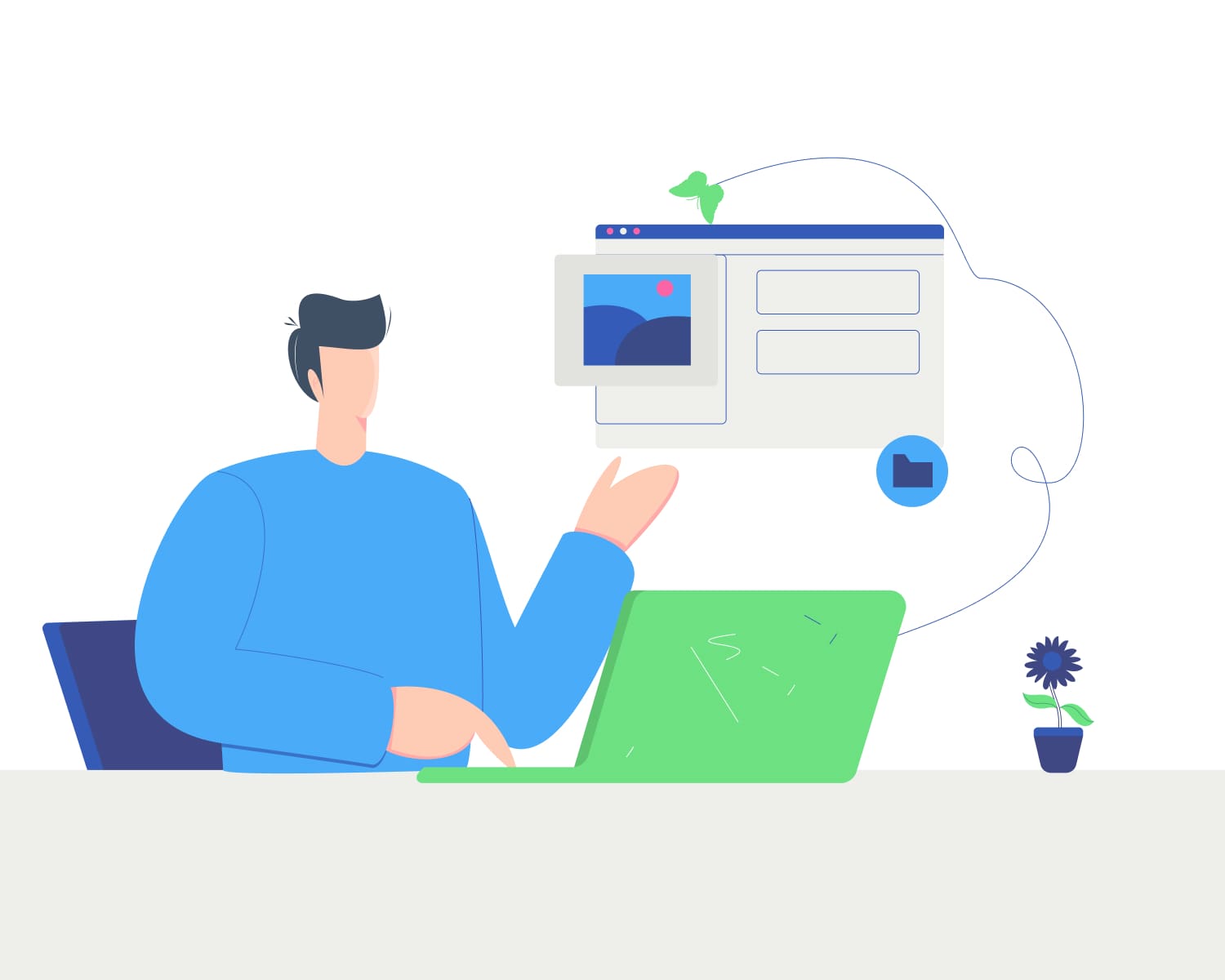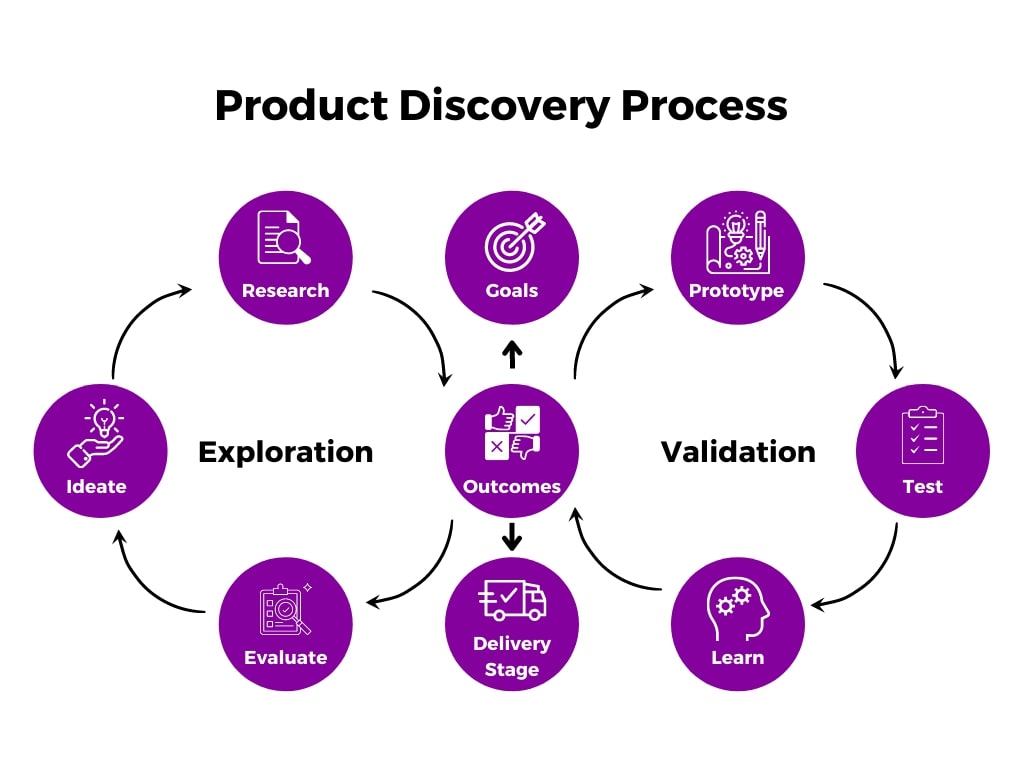How to Discover a Product?

What is Product Discovery?
Product discovery is a relatively new concept in the history of software development, and it was only made possible through the introduction of agile development practices. This article will discuss how to discover a product and go about it. What are some methods for finding products?
There are three main approaches, all with their pros and cons: user research, market research, and brainstorming/trend spotting.
You can do user research through surveys or interviews; market research can involve focus groups; brainstorming/trend spotting is more exploratory but less rigorous than other methods.

What Are The Product Discovery Techniques?
One of the most popular product discovery methods is called “Heuristic Evaluation,” Jakob Nielsen developed it in the early 1990s. It’s a technique used to evaluate a product based on how well it meets user needs. Heuristics are general rules that help you make judgments about specific cases.
There are different types of heuristics, including the product’s usability and the design and features.
There is also a technique called “Contextual Inquiry,” developed by Hugh Beyer and Karen Holtzblatt in 1998. This method involves observing people in their natural environment using the product. You can learn a lot about how people interact with your product.
There are also a few tools that you can use to help with product discovery.
One of these is called the “Persona Tool.” It enables you to develop profiles of your users, which will help you during the design phase. Another tool is called the “User Journey Map.”
This tool aids you track how users interact with your product. You will understand how to use these tools in the next section.
User research
This method works well in the early stages of product discovery when you don’t have much information. Ask your target audience what functions and features they desire from such service or product.
Then, build on it iteratively until you solidify an MVP (minimum viable product). It also helps one discover any unmet needs that would be beneficial to fulfill.
Market research
Market research is more rigorous as it involves more factual data.
For instance, you can utilize Google Trends to find out what your target audience is looking for and build on that iteratively until you solidify an MVP (minimum viable product).
Market research involves gathering data from existing options in the market or creating an effect similar to something else and seeing how users respond.
Such research is excellent for validating your idea before devoting time, money, and resources.
Brainstorming/trend spotting
This method is more exploratory but less rigorous than other methods because it relies heavily upon trends that may only be surface-level indicators.
Brainstorming can involve a team of people, or it could just be you, and it’s simply a matter of generating as many ideas as possible to find something interesting or valuable.
Trendspotting is similar but focused on identifying new trends that could impact your product, and it also helps to identify current trends that you haven’t explored yet.
Both these methods help generate a list of product ideas. However, it does not validate the validity or feasibility of those products.
To determine this information, we must use more rigorous and scientific product discovery techniques such as:
Contextual Inquiry
Contextual Inquiry understands the user’s situation and the environment by observing how they work.
It also includes talking to them about their day-to-day workflow related to the problem that we are trying to solve for them.
The goal here is to understand what product features might be helpful and what those features should look to a user in the most effective way.
User Interviews
This technique involves talking to users about their needs and requirements for a product. One can conduct these interviews in person, over the phone, or even through email.
The principal goal is to get as much feedback from potential users as possible to validate our ideas and assumptions about the product and gather information about what features are likely to be the most useful.
User Survey
This tool is another excellent opportunity to ask potential users questions that can help us validate our product design assumptions or even get ideas for new features.
Questions in a survey should relate to using existing products and their expectations of something entirely new.
Product Discovery Vs. Product Delivery

These are two very different concepts, and it is vital to understand the difference between them. Product discovery entails figuring out what needs to be built, while product delivery involves creating and shipping the product.
The former should not be confused with requirements gathering, a crucial part of product delivery. Requirements gathering happens towards the end of product discovery when you account for most of the questions.
The agile development process made product discovery possible by introducing the concept of iterative and incremental development—these concepts allowed for a more flexible approach to software development, better suited for rapidly changing requirements.
Traditional waterfall models were not very good at dealing with changes, but agile allows developers to adapt to change as it comes along. This makes it far more challenging to get started with agile, but the benefits are well worth it.
To deliver a product using agile development, you first need to discover what the product should be. Then, product discovery comes in, figuring out what the product should do and how it should do it. You can do so through the methods mentioned above.
We must also note that product discovery is not the same as product management. The goal of product management is to take all the findings from product discovery and figure out how to turn them into a deliverable product. Product managers usually employ product management software that consists of kanban board and product roadmap software to serve this delegation.
We can say that product discovery is more about figuring out what you need to do, while product management is more about making sure it gets done on time and efficiently. It looks much more diversified than product discovery.
A successful product is figuring out what it should do and how. You can find answers to these questions via various means, the most common user research, problem interviews, and heuristic evaluations.
The goal of these activities is to procure sufficient data about the product and its potential users. Once figured out, it helps a great deal to have a product manager who takes care of the rest.
A good product discovery process starts with an idea or concept that you want to explore further.
You then need to ask yourself what kind of questions you are looking for and whether you can find answers through user research, problem interviews, heuristic evaluations, etc., to not spend too much time or resources on something that won’t work.
The next step is problem interviews, where the goal is to identify the root cause of a problem and how it affects users. Heuristic questioning also comes into play. After that, it’s important to do user research to see how people use the product and what complications they face.
What Are The Steps To Product Discovery?
Identifying good ideas and bad ideas
The first step to product discovery entails figuring out what you are looking for and whether it’s something that you can find through research. You don’t want to spend time on things that won’t work in the end, so determining what you need upfront will save a lot of hassle.
Figuring out the problem
Thie second step to product discovery is to evaluate what is valuable and viable. You have to make sure that your product solves a problem for people. This is a crucial step, as it will help you determine whether the product is worth building.
Building a prototype
Prototyping can be helpful to get feedback from users and test out different ideas. This is also when you figure out the feasibility and early usability of the product.
Scaling
You determine the scalability and performance of your product at this step of product discovery. Do we have what it takes to build this? What type of resources do we need, and cost? Will people use this if we can get it built? We should answer these questions before moving forward.
What do you want to get out of the product? This is where you need to decide what goals and objectives are essential for your business before building a product.
It’s easy to say we want more users or revenue, but we could achieve these goals in many ways and through different products. It all depends on user feedback amongst other inputs from the user passively or actively seeking it out.
You need to think about the market, what is happening there, and predict what your product can capitalize on in the future. You also have to research how feasible this product is from a development standpoint; do we have the resources?
Why is product discovery important?
Product discovery is essential whenever uncertainties regarding what the team needs to develop, whom, and why. It’s dangerous to build a product based on speculation. You can wind yourself tackling a solved problem, wasting your time, energy, and money.
The following are some examples of why product discovery is required:
New prospects: Suppose you want to boost your sales by releasing your product or service in a foreign land or for consumers from various demographics. In that case, you’ll need to research. It could include research on the target market, competition, project goals, and opportunity scale.
New product innovation: When you have an innovative product, it’s best to wait until you know your target market and their wants and interests before creating it. Customers’ potential issue is the focus of product discovery approaches, which allows you to develop what is required.
Improving products: Finding and analyzing what difficulty a new feature would answer for your users and its impact on the entire product satisfaction is critical when adding new features to your product.
Acquisitions: When two organizations merge, you must also consolidate their systems, procedures, and tools. Research could focus on common issues and uncover solutions that meet the interests of both parties while also supporting processes.
What are some product discovery tools?
Maze:
Our Maze is one product discovery tool that may quickly give insights and assist agile teams in quickly testing several prototypes. The discovery features allow you to develop and deliver user surveys to gain advanced consumer data when researching a new product. If you’re concerned about the time, this is a quick way to gather input without setting up interviews or focus groups.
Amplitude:
Amplitude has become a known and successful product analytics platform among product designers.
Amplitude aids in analyzing customer engagements, recording critical product KPIs for your business strategy, and prioritizing which concerns to address before beginning a new product discovery phase.
FullStory:
From the time a user accesses your product to the time they end using it, FullStory records every movement, keypress, and movement on-screen, which is very important in product discovery. This allows you and your investors to see your product through your users’ eyes, allowing you to understand the behavior that drives your data.
The software also organizes these user experiences in an accessible format, allowing you to observe numerous sessions of the same user or refine by a particular episode. It even presents you with points of contact based on the details it gathers.
Conclusion
Finally, once you have all of this information, you need to decide whether or not to continue developing the product. This is where your business case comes in, and one needs to determine whether it is worth the risk.
